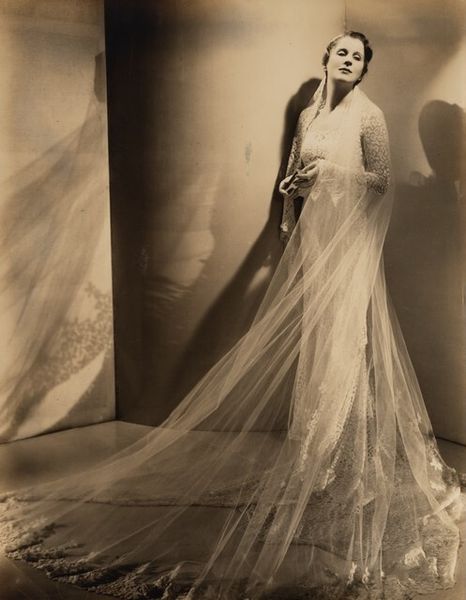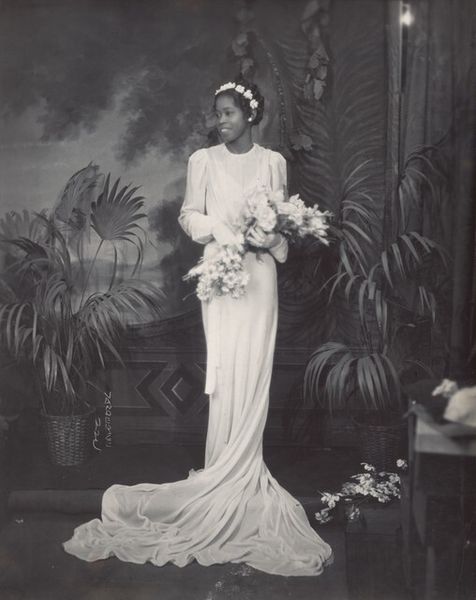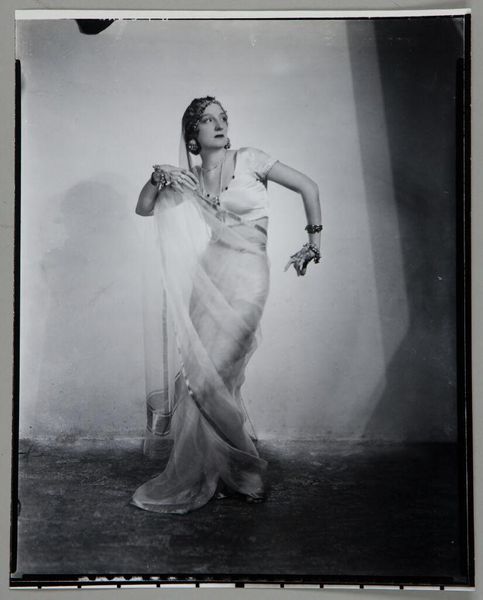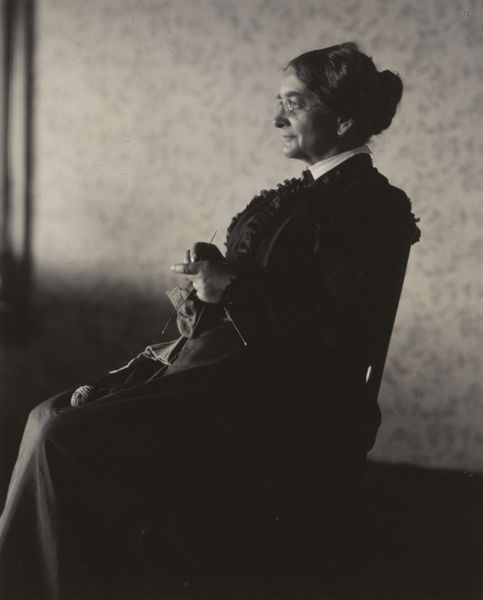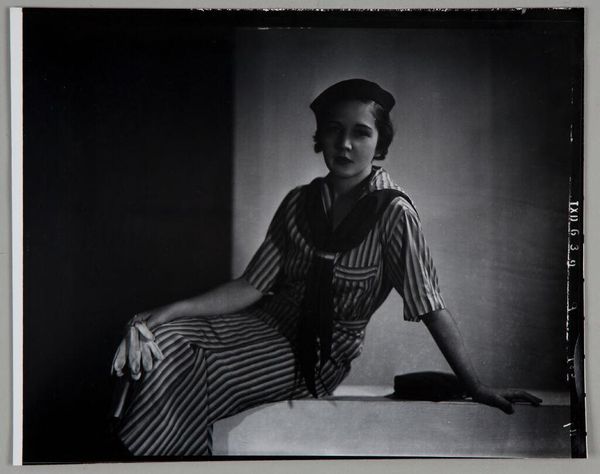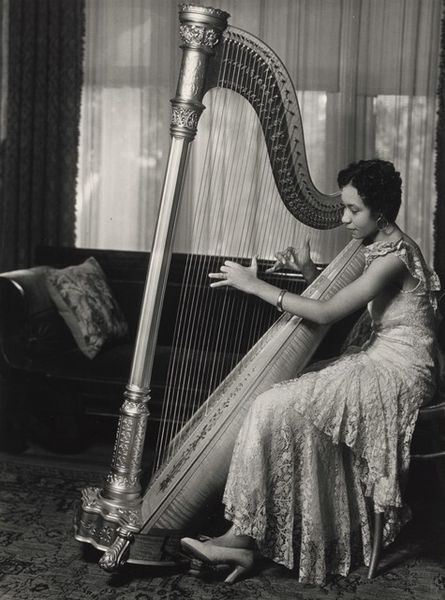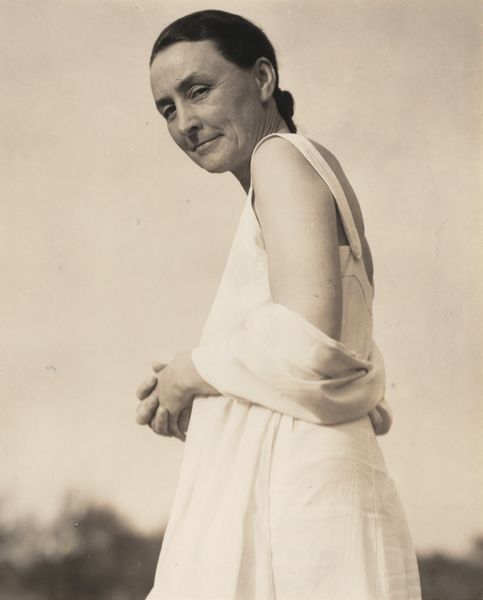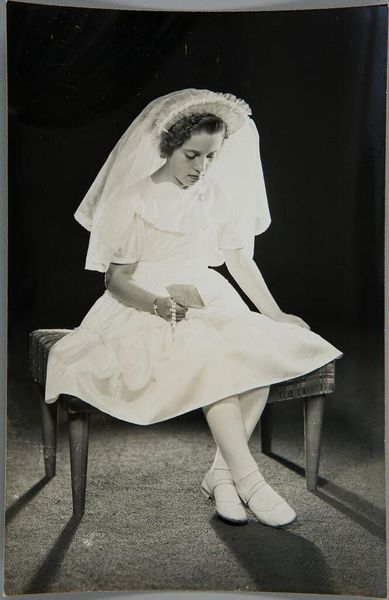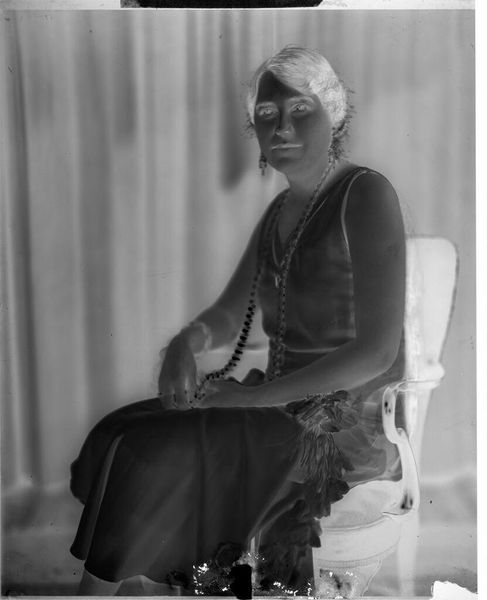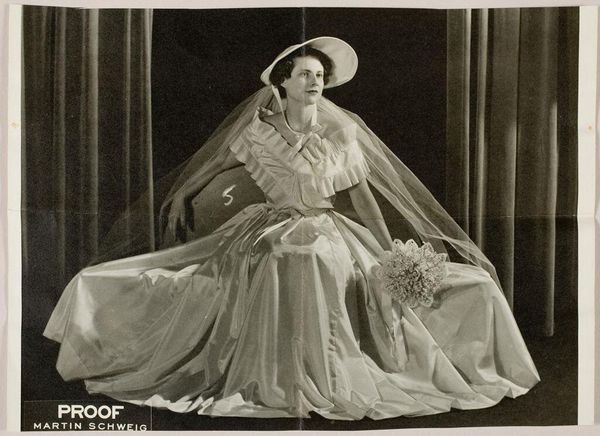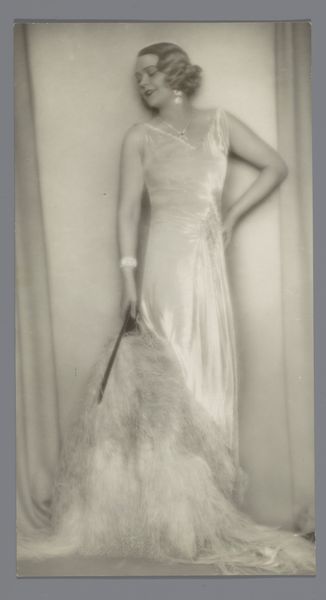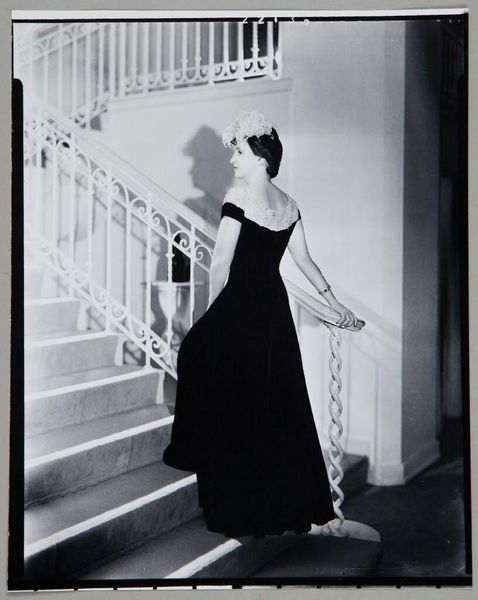
photography, gelatin-silver-print
#
portrait
#
black and white photography
#
photography
#
black and white
#
gelatin-silver-print
#
monochrome photography
#
wedding dress
#
monochrome
#
nude
#
monochrome
Dimensions: image: 22.1 × 31.9 cm (8 11/16 × 12 9/16 in.) sheet: 27.7 × 35.6 cm (10 7/8 × 14 in.)
Copyright: National Gallery of Art: CC0 1.0
Curator: Prentice H. Polk's gelatin-silver print, "Mildred Hansen Baker," likely taken between 1937 and 1981, offers a striking portrait. Editor: It’s dreamlike, almost ethereal. The monochrome tones give it a timeless quality, while the sheer fabric of her dress creates a wonderful play of light and shadow. What's interesting about the dress construction is its stark contrast with that very rigid collar. Curator: Indeed, it invites exploration into the cultural context of dressmaking. The subject, Mildred, is fashionably attired, embodying both classical grace and modern confidence of the time period when gender roles were under scrutiny. This kind of presentation opens narratives about visibility and power dynamics inherent in the fashion and photographic process. Editor: And Polk’s careful control of light is key here. It draws the viewer's eye and creates a sort of soft, sculpted feel in contrast to the crisp backdrop. What type of lens did Polk favor in these portraits, and were those materials difficult to access in Jim Crow Alabama? Curator: Polk often worked within a complex system marked by racial segregation. Understanding this requires analysis of materials availability and consumption practices and what that meant in regards to racial and class representation in art. Considering historical frameworks lets us see not just what is on the photograph's surface but also the challenges overcome to even create such work. Editor: It’s more than just a pretty picture, it speaks to labor, craft, and social structure of that time. By looking at both process and material we have richer layers of meaning here beyond simple portraiture. Curator: Precisely. Analyzing from both activist and materialist viewpoints enriches our appreciation and awareness that informs how art interprets experience. Editor: Agreed. Focusing on both craft and context truly brings forth fuller implications—thanks for taking us into those layered meanings!
Comments
No comments
Be the first to comment and join the conversation on the ultimate creative platform.
